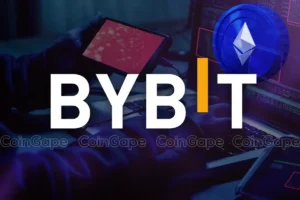Ethereum founder Vitalik Buterin recently outlined his vision for advancing the Ethereum Virtual Machine (EVM) in a section of the Ethereum roadmap called “The Splurge.” This plan aims to bring the EVM to a stable, high-performance state while also improving user experience, security, transaction fees, and cryptographic capabilities. One key element of this vision is the introduction of the EVM Object Format (EOF), which will restructure EVM code to enhance efficiency, scalability, and compatibility with complex cryptographic functions.
The EOF includes a suite of Ethereum Improvement Proposals (EIPs) that separate code from data, restrict dynamic jumps, and introduce new subroutine mechanisms. While legacy contracts will remain functional, new contracts can leverage EOF-specific features for improved performance and reduced gas costs. By incorporating EOF, Ethereum’s network can more easily integrate future upgrades over time. This restructuring will also address challenges within the current EVM architecture that hinder static analysis and limit support for advanced cryptographic methods.
Beyond EOF, Buterin also discussed advancing account abstraction as part of “The Splurge.” This update would expand the transaction verification process beyond ECDSA signatures and allow accounts to use arbitrary EVM code for verification logic. By enabling transactions to originate from smart contracts rather than solely from Externally Owned Accounts (EOAs), account abstraction aims to enhance decentralization and mitigate risks such as denial-of-service attacks. Harmonizing account abstraction implementations on Layer 1 (L1) and Layer 2 (L2) is crucial for maintaining network integrity and efficiency.
In terms of transaction fee economics, Buterin proposed the concept of “multidimensional gas” to better allocate the network’s capacity. This approach involves having distinct prices and limits for various blockchain resources, such as calldata, state reads/writes, and state size expansion. By implementing multidimensional gas, Ethereum could reduce strain on resources and minimize the need for constant performance optimization. However, there are trade-offs to consider, including increased protocol complexity and challenges in optimizing block capacity algorithms. To streamline implementation, Buterin suggested limiting multidimensional gas usage to EOF, thereby avoiding some of the inherent complexities associated with this approach.
Overall, Buterin’s additions to “The Splurge” section of the Ethereum roadmap signal a significant step towards enhancing the platform’s capabilities and performance. By introducing EOF, improving account abstraction, and refining transaction fee economics, Ethereum aims to achieve a more efficient, secure, and user-friendly network environment. These updates mark a crucial phase in Ethereum’s evolution and demonstrate the project’s commitment to advancing blockchain technology for broader adoption and utility.

















